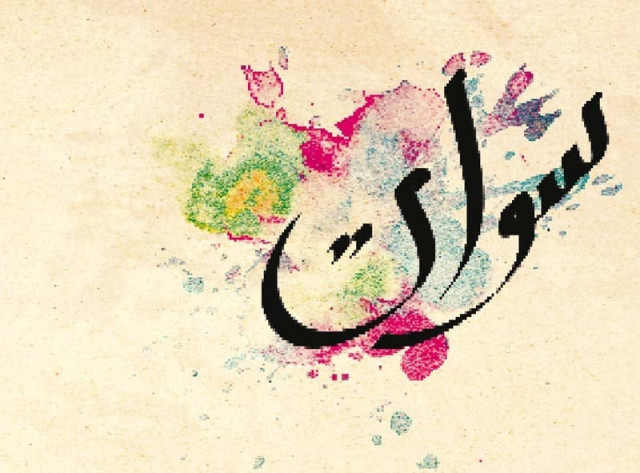A cursive history : Keeping calligraphy alive in Swat
Locals look to Nasir Khan Yousafzai’s Islamic carvings for spiritual relief

Locals look to Nasir Khan Yousafzai’s Islamic carvings for spiritual relief . DESIGN & CALLIGRAPHY: TALHA KHAN
The history of calligraphy—the art of handwriting as a medium of expression beyond the meaning of words themselves—could be generically traced to the earliest found symbols. There was a time when carving on a rock was a utilitarian skill known to few, it eventually give way to hieroglyphics in Before Common Era (BCE).
Papyrus to printouts
Before the advent of the printing press, things had to be written and embellished by hand. Letters and symbols were carved on stone, on wax and clay and eventually inked on parchment. Eventually the skill evolved to brush on paper.
As writing milestones moved from the standardisation of the Kufic script (circa 700CE), to the invention of block printing (circa 800CE China), the printing press (1400CE in Europe) and to computer and mobile tech, cursive (handwritten) calligraphy became redundant. Only calligraphy as an art form has prevailed. And in Pakistan, it is quite closely connected to religious symbolism – be it on paper or as a carving.
Nasir Khan Yousafzai, an artist from Swat, carves Quranic verses and names of significant religious figures into wood with meticulous detail. He learnt the art from his brother. However, he also paints his carved calligraphy with multiple colours – colourful finished pieces which helped make a name for him.
Yousafzai’s work is elaborately detailed. According to another artist: “Calligraphy is a difficult task that requires diligence, time, energy, delicacy and a great skill set. Nasir is brilliant at what he does. His art is very close to Pukhtun culture and always contains a message for people.

His work [which also portrays] images of early childhood marriages […] is particularly inspiring.”
Tracing Swat’s symbolic routes
Symbols etched on architectural remains have been excavated from the valley, dating to 1CE.
According to Doris Meth Srinivasan, a curator of South Asian Art in America, carvings and symbols in Swat reflect not just Gandharan influences but also Hellenic ones. Srinivasan notes in her research that the history of symbols in Swat flows from the Greek influences of Alexander’s raiding armies to the Buddhist settlements to the permanent impact of Muslim rule.
And here Yousafzai agrees that generation after generation in Swat has carved stones, wood and various other objects to express their emotions and therefore, the district serves as a centre for calligraphy. Yet, he complained that demand for such forms of art is slowly receding.
A dying art form?
“People demand more computerised and innovative designs today,” he told The Express Tribune.
Yousafzai argues though calligraphy was once used as the most predominant form of art and even ornamentation in houses, it has now been sidelined due to advances in technology. He told The Express Tribune that the government needed to set up institutes and help develop the arts, including calligraphy.
However, even as the artist claims demand is falling, his work is appreciated globally. Yousafzai’s work is displayed at exhibitions in Saudi Arabia, Dubai and many other countries. The demand for his work is highest during the month of Ramazan, during which Yousafzai retreats into mountainous areas to work in peace. Locals say his work is not only decorative but has added value due to its religious nature. For those who look for curative powers in holy text, Yousafzai’s work brings the best of both worlds.
Published in The Express Tribune, July 22nd, 2015.













COMMENTS
Comments are moderated and generally will be posted if they are on-topic and not abusive.
For more information, please see our Comments FAQ